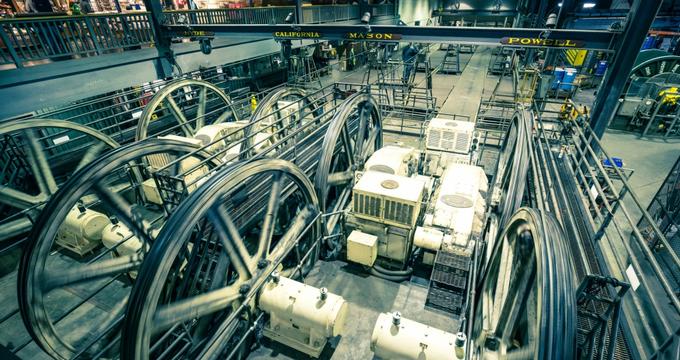"Step into the heart of San Francisco history at the Cable Car Museum, a free museum located inside the city’s operational cable car powerhouse and barn in the historic Nob Hill neighborhood. "
I Feel This is Great For:
Families with kids
Watch the live machinery in action and explore real 19th-century cable cars
History buffs
Discover preserved grip cars, rare artifacts, and vintage photographs of San Francisco’s past
Transit and engineering enthusiasts
See how the winding powerhouse works and learn about grip technology evolution
Budget-conscious travelers
Enjoy one of the city’s top free attractions with rich educational value
Highlights & Exhibits
- Live Powerhouse Deck: View the cables in motion from above the working cable car engines
- Clay Street Hill Railway Grip Car No. 8: The last surviving car from the first cable line, dating to 1873
- Sutter Street Railway Cars No. 46 & No. 54: Restored 19th-century grip and trailer cars showcasing early side grip technology
- Mechanical Displays: See historic grip mechanisms, early parts, and cable tools
- Historic Photographs & Memorabilia: Trace the journey of cable cars through fascinating visuals and artifacts
Special Features
- Viewing Gallery: Go below street level to see where cable lines enter the powerhouse
- Gift Shop: Shop cable car bells, books, and collectibles that support the museum’s preservation efforts
- Cable Car Access: Ride the Powell-Hyde or Powell-Mason lines directly to the museum stop
- Annual Bell Ringing Contest: Head to nearby Union Square in summer to watch cable car operators compete
Insider Tip
Bring ear protection for little ones—the powerhouse machinery is fascinating but can be quite loud! Visit in the morning to avoid tour crowds and enjoy more space around the exhibits.
Visitor Information
Location: 1201 Mason Street, San Francisco, CA, 94108
Phone: 415-474-1887
Website: cablecarmuseum.org
Plan Your Trip


